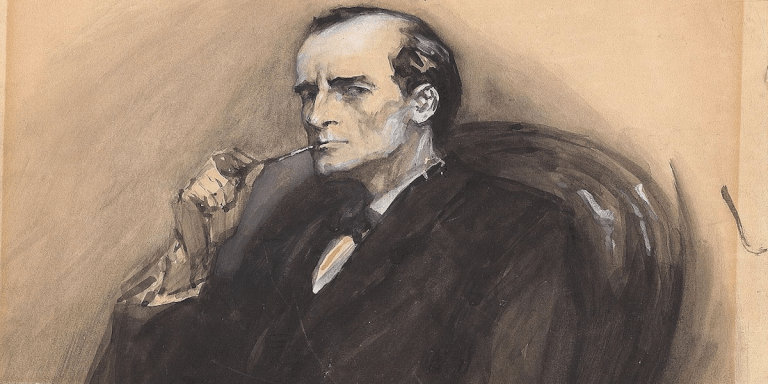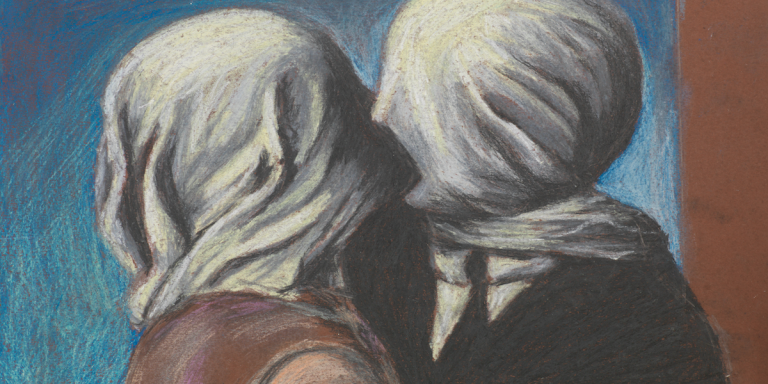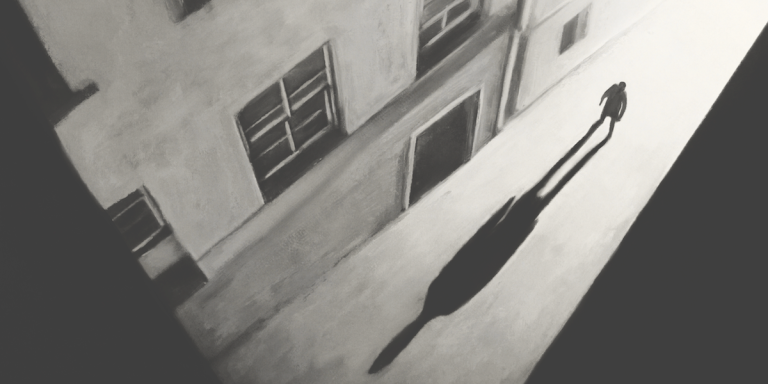A Brief History of The Black Dahlia
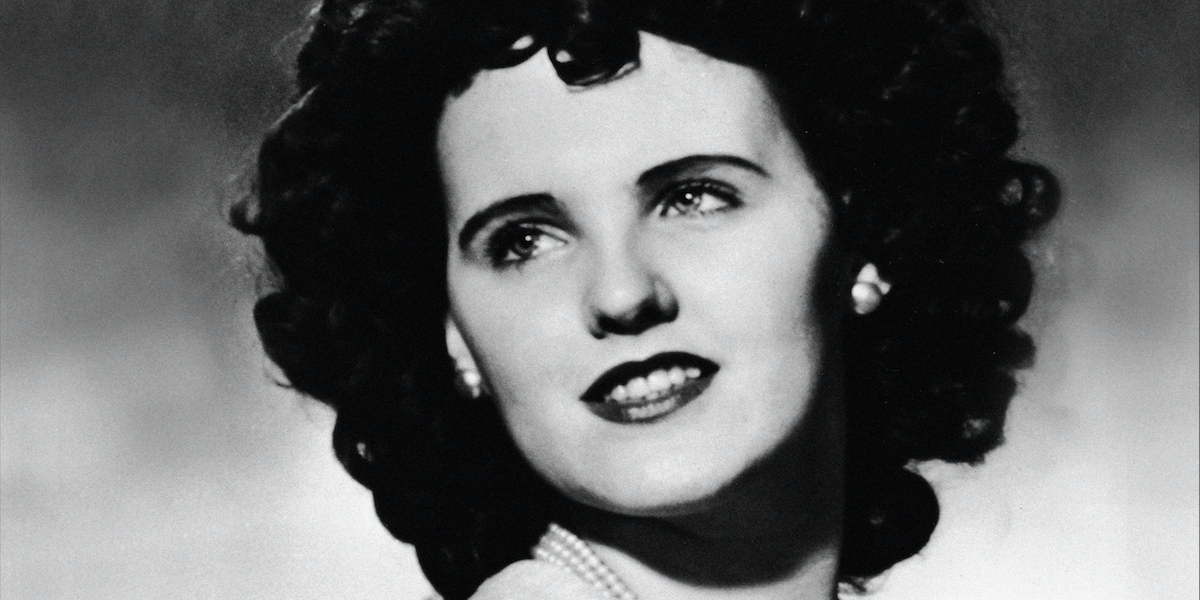 10 AM. January 15, 1947. Betty Bersinger, a local housewife, was walking down Norton Avenue in Los Angeles when she saw something disturbing in an empty lot on the street. When she first saw the corpse, Bersinger said that the body was so white that at first she assumed it had to be a mannequin. But when she realized that what she was actually looking at was a severed corpse, she ran to contact the authorities.
10 AM. January 15, 1947. Betty Bersinger, a local housewife, was walking down Norton Avenue in Los Angeles when she saw something disturbing in an empty lot on the street. When she first saw the corpse, Bersinger said that the body was so white that at first she assumed it had to be a mannequin. But when she realized that what she was actually looking at was a severed corpse, she ran to contact the authorities.
The body Bersigner found was Elizabeth Short, known posthumously as the Black Dahlia. Her body was split in half at the waist, and pieces of her flesh had been cut away from her body. And while she was severely mutilated, there was no blood anywhere, suggesting that the body had been thoroughly cleaned before being positioned at that spot on Norton Avenue.
The LAPD identified Elizabeth Short by her fingerprints, and an autopsy was performed on Short’s body on January 16, 1947. Marks on her body suggested the woman had been bound and tortured, and her official cause of death was cerebral hemorrhage and shock.
The police then sent out a bulletin in the hopes of finding more information about the victim. Eventually, some details about Elizabeth Short were uncovered: she moved to Los Angeles in July 1946. She worked as a waitress as she struggled to get acting roles in Hollywood, and she lived in a rented room behind the Florentine Gardens nightclub on Hollywood Boulevard.
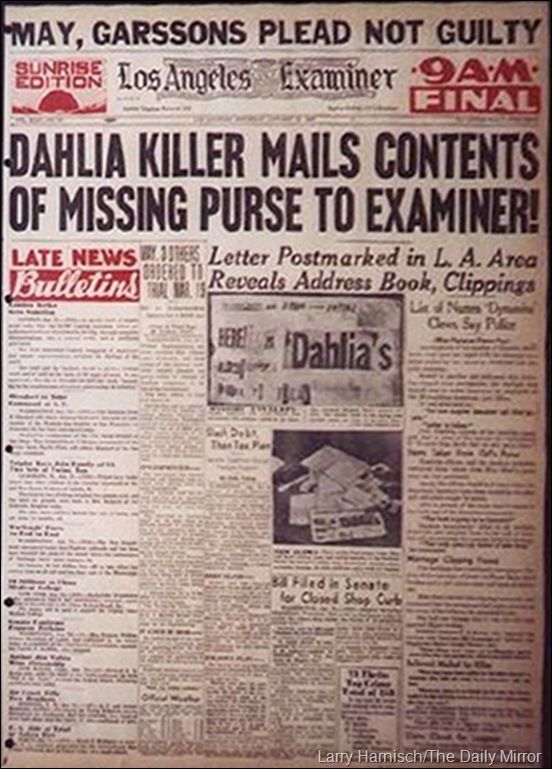 As news about Short’s murder began to circulate, newspapers started referring to her as the Black Dahlia, mostly due to her striking dyed black hair and the black clothing she wore. The story of the Black Dahlia made headlines for weeks.
As news about Short’s murder began to circulate, newspapers started referring to her as the Black Dahlia, mostly due to her striking dyed black hair and the black clothing she wore. The story of the Black Dahlia made headlines for weeks.
On January 24, 1947, a suspicious manila envelope addressed to “The Los Angeles Examiner and other Los Angeles papers” was discovered. The envelope included a letter using cut-out words from newspaper clippings that said, “Here is Dahlia’s belongings.” Inside the envelope were Short’s birth certificate, business cards, photographs, names written on pieces of paper, and an address book. All of the contents of the envelope had been cleaned with gasoline, similar to how Short’s body had been cleaned. This lead authorities to believe the letter was definitely from Short’s killer. Police contacted approximately 75 men from Short’s address book, but the majority of the men claimed to have only known Short briefly. Due to the nature of the precise cuts on Short’s body, authorities suspected someone in the medical field could have been the killer, and police served a warrant to the USC Medical School, which was located close to where Short’s body had been found. But after several interviews and background checks, they were still no closer to solving this case.
Although the case went cold, people’s fascination with the story has not dissipated. Elizabeth Short’s unsolved murder has inspired many books and films, both fiction and nonfiction. The most famous account of Elizabeth Short’s murder is The Black Dahlia, a 2008 novel that fictionalizes the details of this fascinating story. This novel is so well-researched and so vividly rendered that many readers have said they had to remind themselves that it was fiction and not true crime. In this book, the author James Ellroy depicts the details of the Black Dahlia investigation and imagines how the crime could have been resolved. In 2006, Ellroy’s book was adapted into a noir film, directed by Brian DePalma and starring Mia Kirshner as Elizabeth Short.
While the case of the Black Dahlia is still unsolved, there are many theories about who could have committed this crime. A large number of people have actually come forward to confess to the crime, but most of these confessions have been proven to be false. Some crime authors have made a link to the Black Dahlia murder and the Cleveland Torso Murders, which took place between 1934 and 1938. The murder of Jeanne French in Los Angeles on February 10, 1947 has also been discussed as possibly linked to Short’s murder.
At the time of the investigation, Leslie Short was considered to be the prime suspect, but he was never brought to trial because of clerical errors. This, along with other details of the case, has lead some theorists to believe that the Black Dahlia’s murder was never solved because of a police cover-up.
After retiring from the LAPD, former police detective Steve Hodel published a true crime book called Black Dahlia Murder: A Genius for Murder. In it, Hodel lays out many details of the investigation and presents his own theory. He believes his own father, Dr. George Hodel, killed The Black Dahlia.
While there are numerous theories about what truly happened to Elizabeth Short, the case remains unsolved. And it remains a fascinating true crime story that has inspired many mystery novels and film noir movies in the years since.
By clicking 'Sign Up,' I acknowledge that I have read and agree to Hachette Book Group’s Privacy Policy and Terms of Use
What to Read Next



